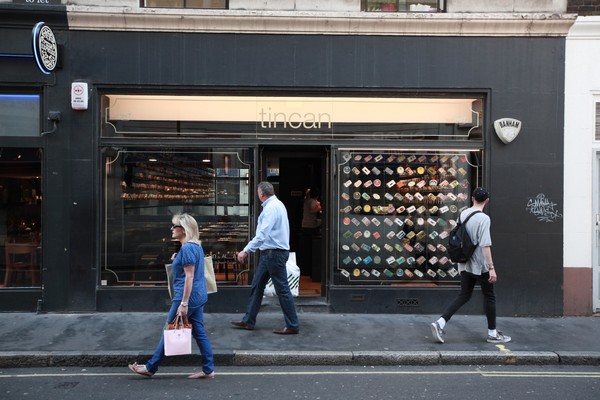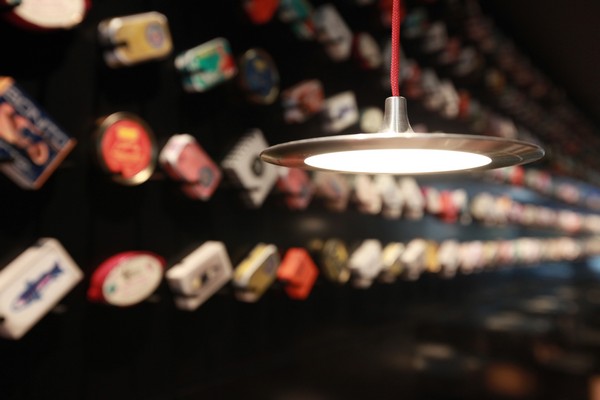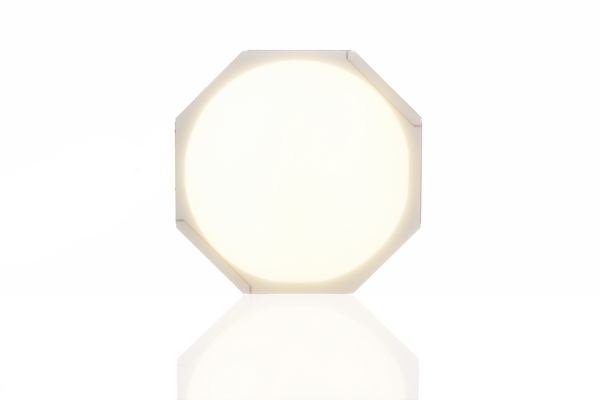 |
|
The exterior of pop-up restaurant Tincan in London. (Photo Credits: LG Chem) |
LG Chem OLED Light panels have been used as the main light source at Tincan, a newly opened pop-up restaurant designed by AL_A. The restaurant which was introduced in time for this year’s London Design Festival, serves an exquisite collection of tinned seafood along with carefully selected beer and wine. The decision to use LG Chem OLEDs for the restaurant’s lighting was based on the excellent light quality as well as the design possibilities unique to OLEDs. Moreover, the simplicity of OLEDs enabled the architectural design firm, AL_A, to design and manufacture the lightings themselves.
 |
|
LG Chem OLED panels were used to light up the restuarant interior as seen at the bar. |
“It is very easy for us to be creative and think of new designs. It is a ‘simply plug-and-play’ element. It opens a whole new world of possibilities” says Maximiliano Arrocet, a director at AL_A. The actual lamp was prototyped using 3D printing. Although the final products were created through aluminum spin forming, the designers at AL_A admit that the 3D printed version could have well been the final product.
 |
|
Close up of the LG Chem OLED panels applied in the Tincan lighting project. |
LG Chem circular type OLED panels applied
LG Chem circular type Φ100mm OLED light panels (N6OA30) were selected for the project. 16 of the OLED panels were put inside simple aluminum cases, and hung from the ceiling with simple wires, adding a modern vibe to the restaurant. The panels have an efficacy of 60lm/W, a high CRI (>90) and is only 1mm thick. The lifetime of the panels is 40,000 hours (LT70) at 3,000 cd/m2.
 |
 |
|
LG Chem's N6OA30 circular OLED panels were used in the project. |





 CN
TW
EN
CN
TW
EN







